Summer means travel for my family. It also means that between commentary on life, social issues, and our years living in Texas, I will deliver two to three posts a month about our family’s summer travels until the end of the year.
The following post is too long for email. You will need to open the full blog post in your browser to read the whole post.
By the time I planned my family’s vacation west to Yellowstone, I had traveled through the Black Hills three times. On all three of those trips, I had stopped at Mount Rushmore and driven right past Crazy Horse. I looked out the car window each time and wondered about the memorial. I watched the slow progress. And somehow I knew I was missing something in my Black Hills experience by not visiting the largest mountain sculpture in the world.
So when I planned our trip to Yellowstone, I determined that my whole family would make visiting the memorial a priority.
Because our drive from the Badlands was only about two and a half hours to our campsite in the Black Hills, we had plenty of time after our arrival to a new location to check at least one item off of our Black Hills bucket list. I decided to make Crazy Horse our first stop.
Less than 20 minutes later, we had paid for our tickets and were parked. I took pictures of the statue from the parking lot, excited to finally see what all the fuss was about and learn more about the mission of the memorial.
What is the Crazy Horse Memorial? In the 1940s, Chief Henry Standing Bear, a longstanding advocate for the Lakota people, asked sculptor Korczak Ziolkowski to carve a memorial in the Black Hills to honor his people. Ziolkowski was already a successful sculptor when he was asked to assist with Mount Rushmore during the summer of 1939. Eventually he enlisted in World War II and was wounded at Omaha Beach. Although he was invited to make government war memorials in Europe after the war, he chose to accept Chief Standing Bear’s invitation to work on the Crazy Horse Memorial. He would spend the rest of his life working on the sculpture he would never see completed.
Ziolkowski refused to take government funding for the project, depending on private donations to keep the project going. He wanted the grounds to be a place that honored the local indigenous tribes and history and encouraged furthing the education and artistic endeavors of the people. His children and grandchildren have kept his dream alive and continue to carve the mountain and keep the entire complex alive and growing.
The memorial site is so much more than just the statue. There is an expansive museum with Native American artifacts and art created by local artisans. The museum complex has been built up around the original Ziolkowski home and Korczak’s studio. There is an educational and cultural center where local Native Americans continue to meet and create, often displaying their artistic talents to visitors at the museum who can see their art and enjoy music and dance performances throughout the year. The basement of the cultural center has a fascinating museum discussing the history of bison in America. And while it is located away from the main complex, the campus also hosts a university focused on meeting the educational needs of Native Americans from across the United States.

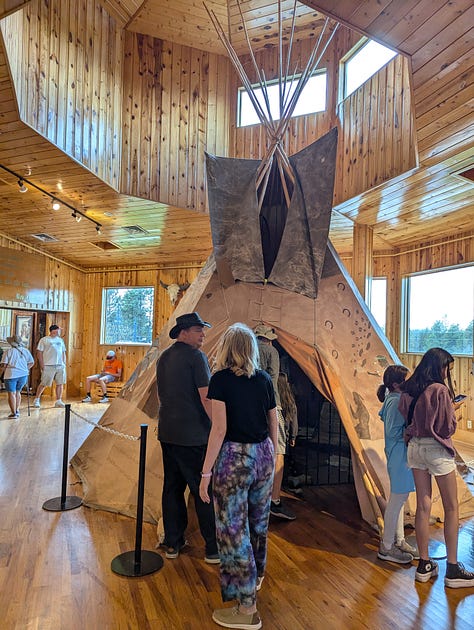
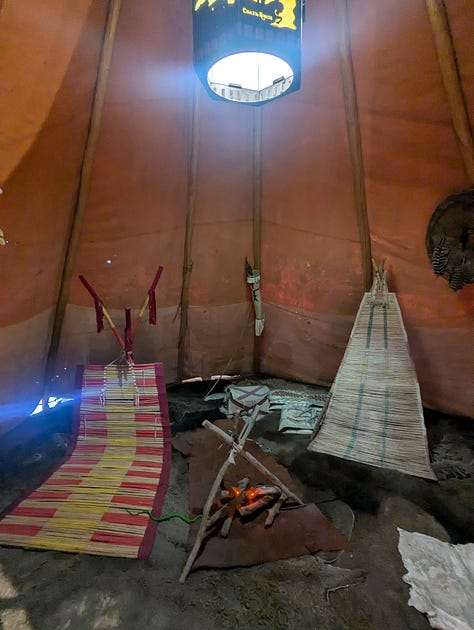
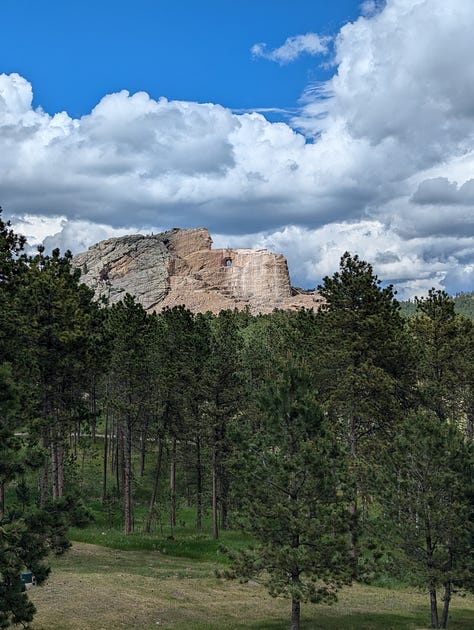
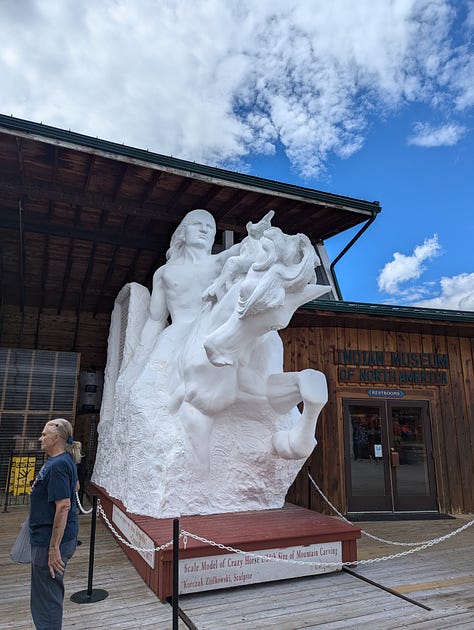
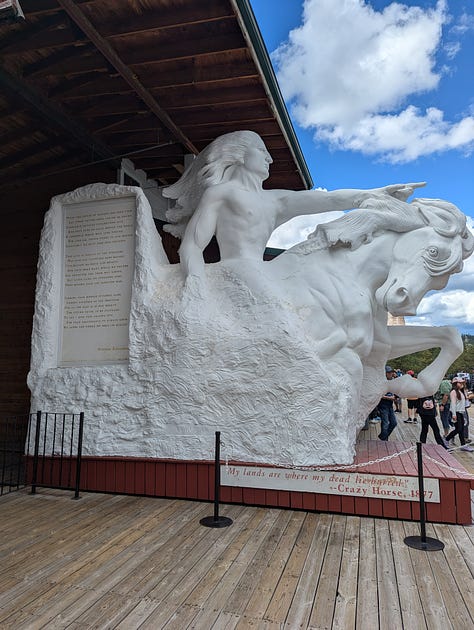
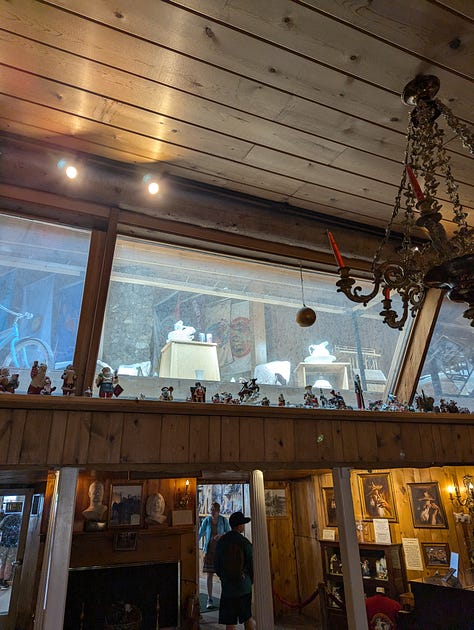
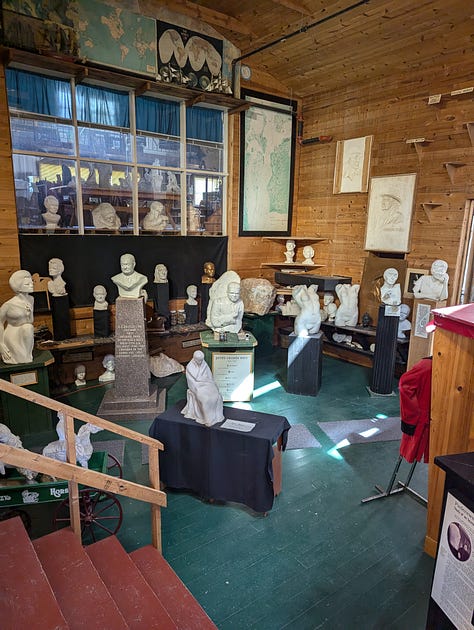
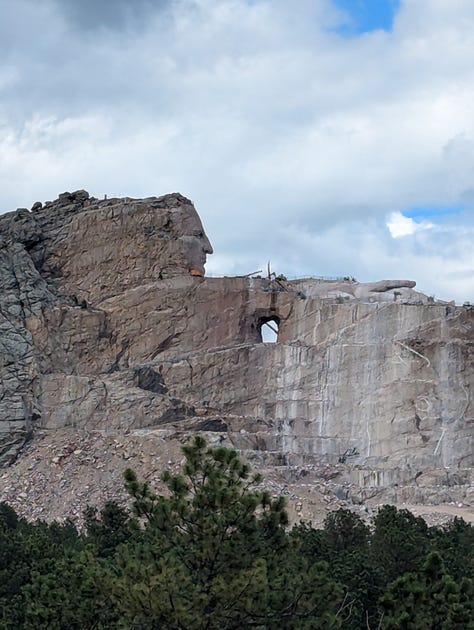
While we could have chosen to pay for a bus ride to the base of the mountain for a closer look, we felt like we had seen and learned enough from the museum. I was glad we made the stop a priority, and that we had visited Crazy Horse before we made the trip to Mount Rushmore.
Ah, Mount Rushmore.
I have a long history with the national monument.
The first time I visited the monument was when I was 11. My dad, his cousin, and my sister Lisa, and I were on way way back to Illinois from my uncle’s wedding in Washington. As part of our long drove home, we made stops at Little Bighorn and Mount Rushmore.
Then, on our family’s fateful camping trip when I was 15, we made another stop at Mount Rushmore, as pictured below.
When my husband Jeff said he wanted to go to Yellowstone in 2004, Mount Rushmore was on his short list of places he knew he wanted to see along the way. When we arrived in the Black Hills it was hot. We baked as we walked in the sun to the visitor center and watched the films and strolled through the museum. When we finally got to hiking the loop to look at the monument up close, the sun sat right behind the faces, making it difficult and uncomfortable to see the entire sculpture. Let’s just say my husband’s first visit to the national monument was not very monumental.
Order my book to read more about the above camping trips and many more camping experiences over the years.
Somehow, I keep coming back to the monument over and over again, and each time I have a different experience, a different rush of emotions as I stand in front of the state flags that have been a part of my life and then view the presidential faces rising in the background.
This time, I tried to view it through my children’s eyes.
Our teenagers are not naive. They are inquisitive, well read, and understand the world is complex. After our visit at Crazy Horse, as we drove through Custer State Park, we talked about Chief Standing Bear and his probable experiences as a student at Carlisle school. We talked about Indian boarding schools and the ways children were tortured. We talked about the concept of “Kill the Indiana, save the man.” We talked about mass graves of children discovered outside of boarding schools in Canada and the First Nations. We didn’t talk about those things to depress our children or make them angry at their country. In fact, they were more irritated at the education system than they were at the United States, asking why they were learning about that stuff from their parents and not in their social studies classes. We talked about those things because I want my kids to see their country for all that it is, the good and the bad.
And so, as we walked around the grounds of Mount Rushmore this time, I tried to hold that complexity in both of my hands. Our kids proudly stood in front of both the Texas and Indiana flags, embracing both states as important parts of their history. We talked about the original plan for Mount Rushmore, the inclusion of Western heroes like Red Cloud, Lewis and Clark, and Buffalo Bill Cody. We talked about why, in the 1930s, these four presidents would be the ones who would end up on the mountain. We even told them that because of their love for national parks, Teddy Roosevelt should be their favorite former president. As a family, we sat through the film about the creation of the monument and walked around the museum. We visited the Lakota, Nakota, and Dakota Heritage Village on the path to the monument and listened to the guides as they discussed Lakota language and music. And our family enjoyed the trail taking us through the many views of the monument and to Borglum’s stunning studio where the park still displays his work-in-progress model.
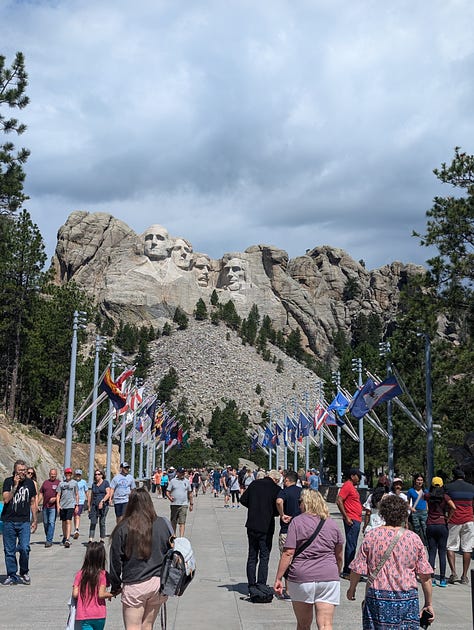
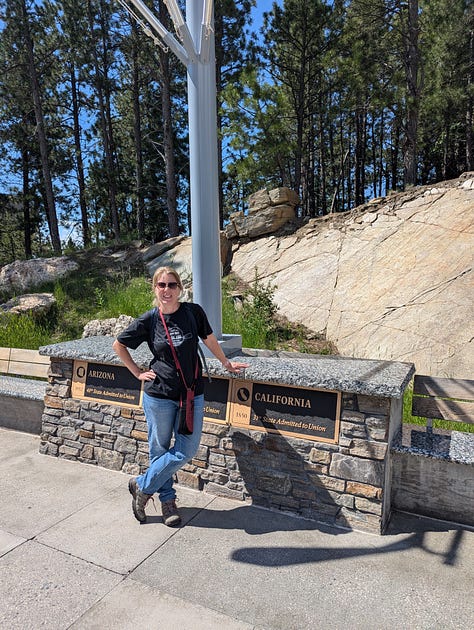
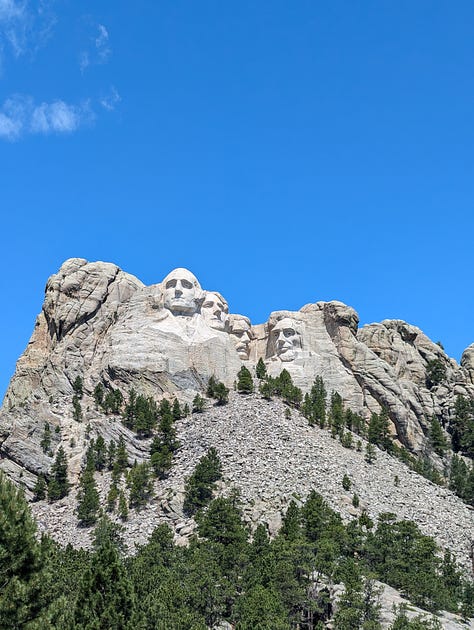
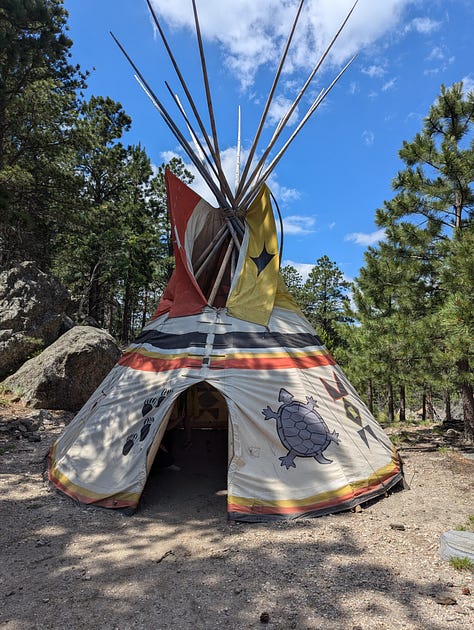
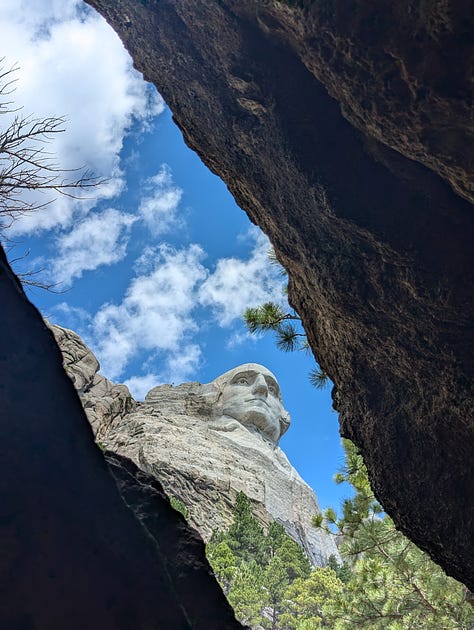
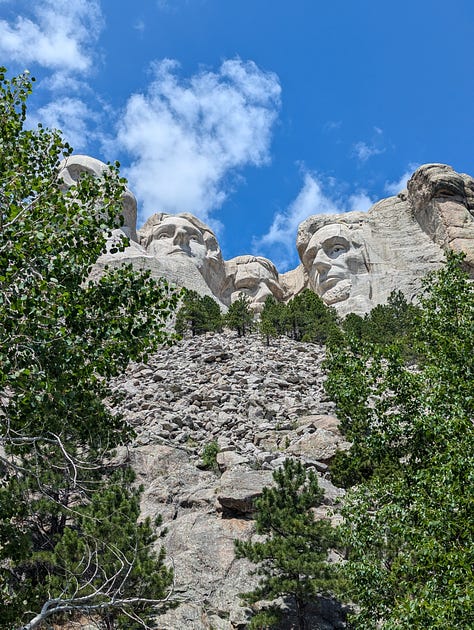

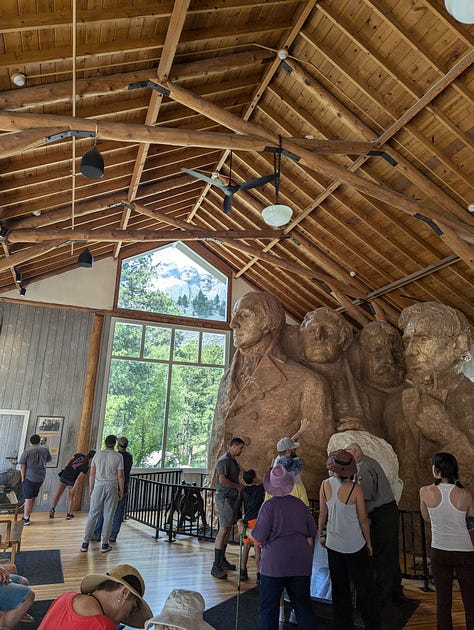
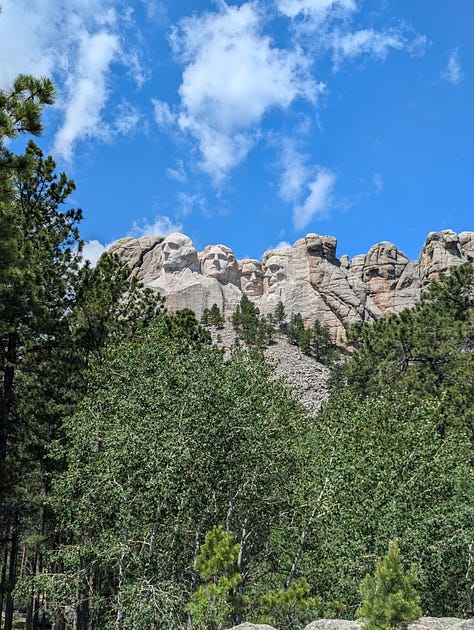
It had been a long time since I was able to hold all of the complexity that is Mount Rushmore in my head and heart. But this time I could. The sun was in the right position. The temperature was perfect. And we could enjoy the monument for what it is: a stunning achievement portraying four very different and important flawed men who significantly shaped our country unto what it is today, for better and for worse.
All four men did tremendous good in the formation and development of our country. And all four men were also deeply flawed and caused great harm to certain populations in our country, including those whose land the monument was build on. I know we need to embrace the both/and when we talk about our heroes. True patriotism doesn’t turn a blind eye to the truth. It looks the truth in the eye and says, “Now, how can we do better? How can we make this right?”
And in what might be my last visit to the national monument (but never say never), I believe I can say the National Parks Service is doing what it can to do just that.
Perfect solutions may not be available to us, but as I walked past a park ranger doing a demonstration with several park visitors holding an American flag, I was reminded why I have hope. He talked about freedom of speech. He talked about the need to listen to others, even when we don’t agree. And he spoke with the passion and conviction I have come to expect from these civil servants.
When I asked the kids, our daughter said Crazy Horse was her favorite. Our son said Mount Rushmore was his. And while they both appreciated both mountain sculptures, it made sense. Different sculptures and experiences speak to their very different personalities. But they were glad we saw both, and so am I.
Do you want to know more about how I plan our vacations? Check out this blog post and get a copy of my planning spreadsheet below:
Support my writing
While most of my work here is free for all subscribers, it is still a labor of love that I fit into the few hours I have when I am not teaching or being an attentive wife and mom. If you want to support my writing but you do not want to commit to being a paid subscriber, please consider a one-time donation.
You can also support me by ordering my book or books from my favorite book lists at my Bookshop.org affiliate page.
Check out my RedBubble store for related merchandise.

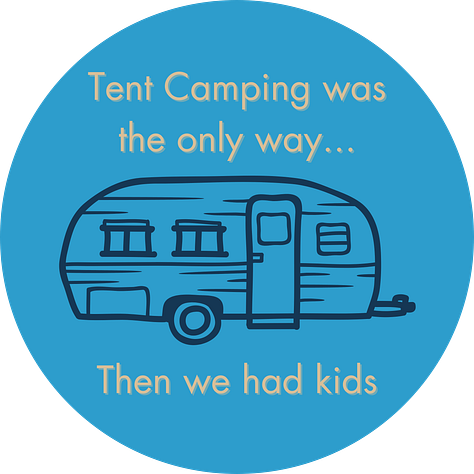

If you want to be a regular supporter, you can upgrade your subscription from free to paid and get occasional content only for paid subscribers.
And thank you for supporting my journey 💗




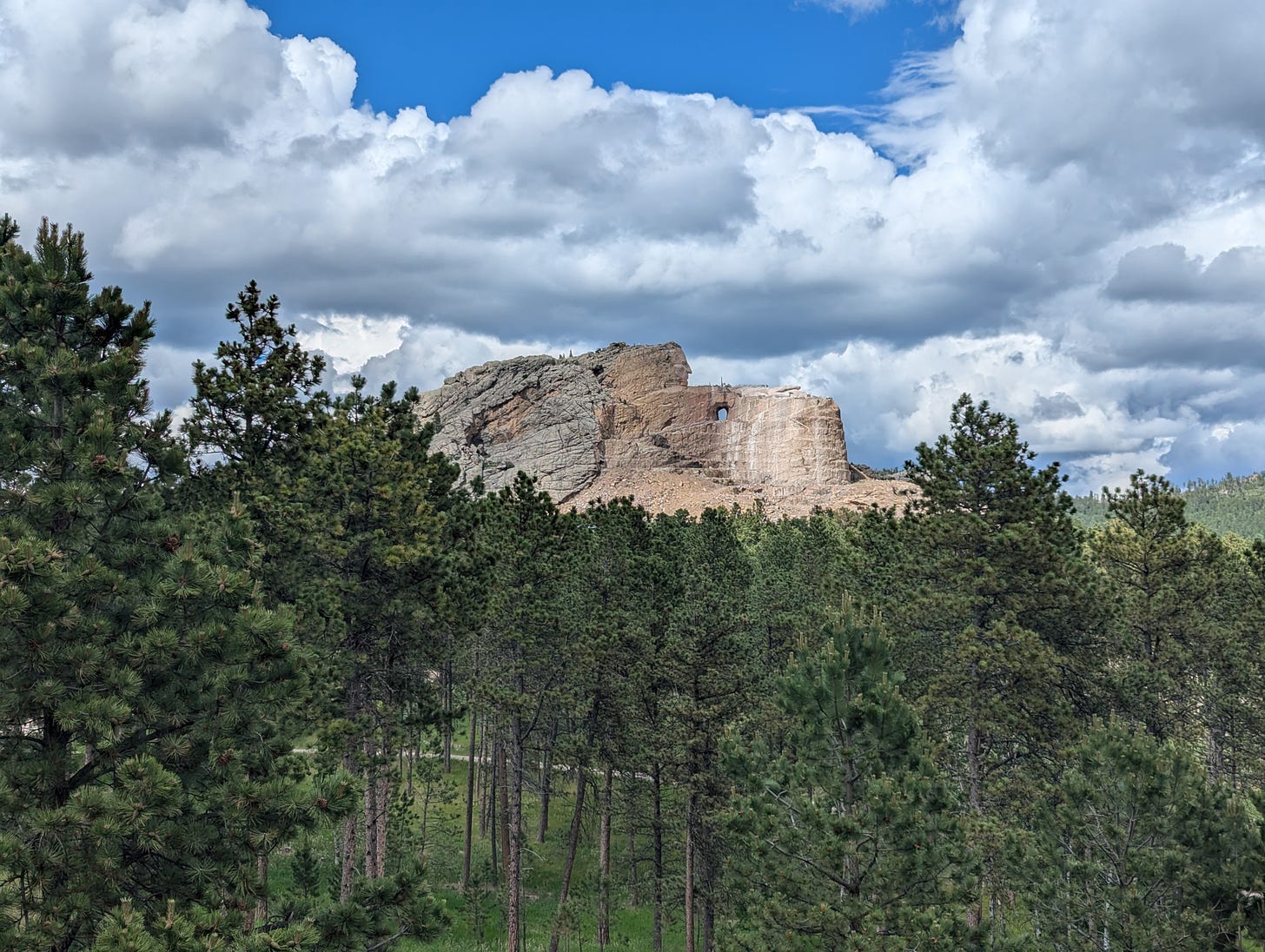

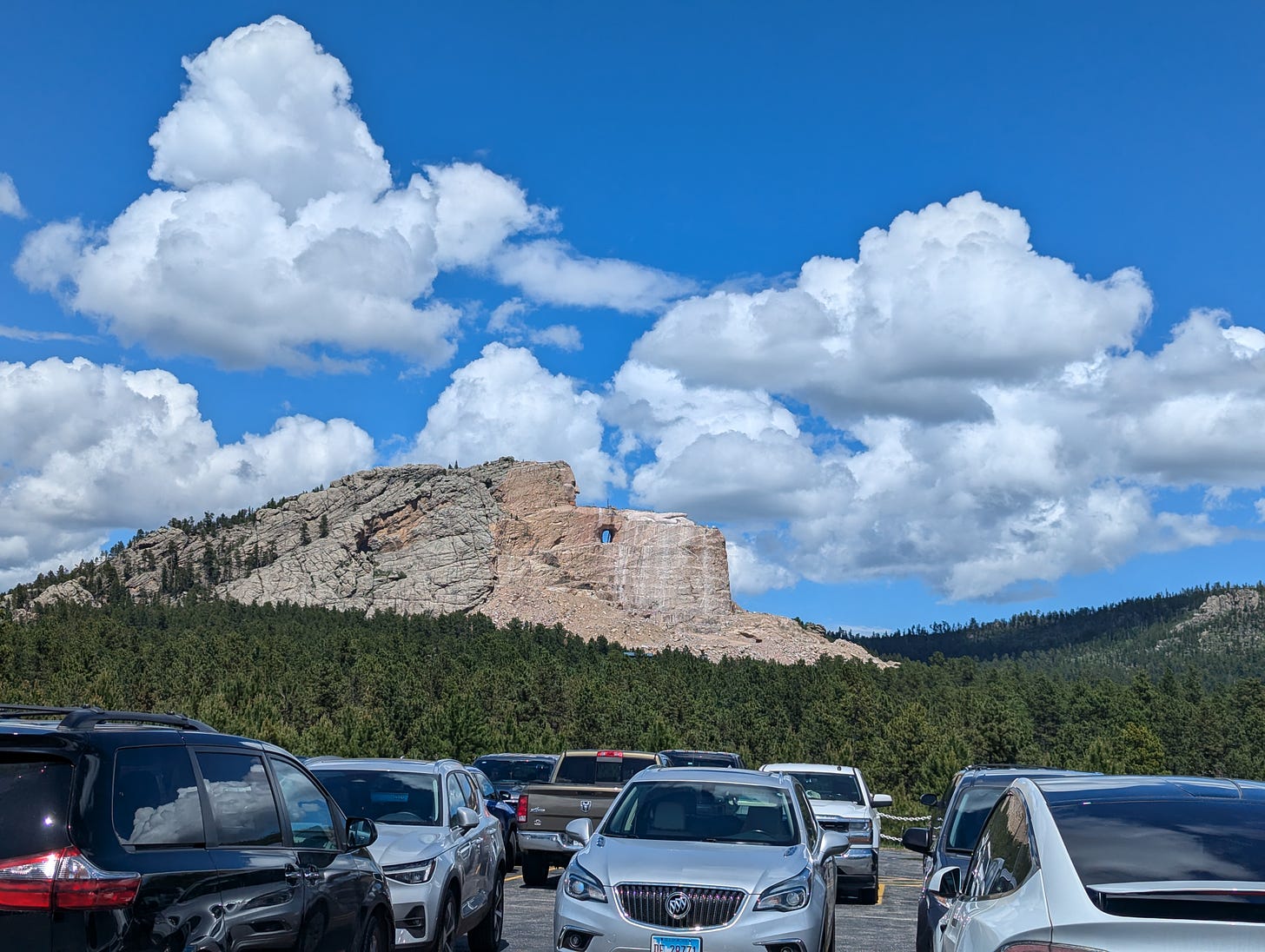

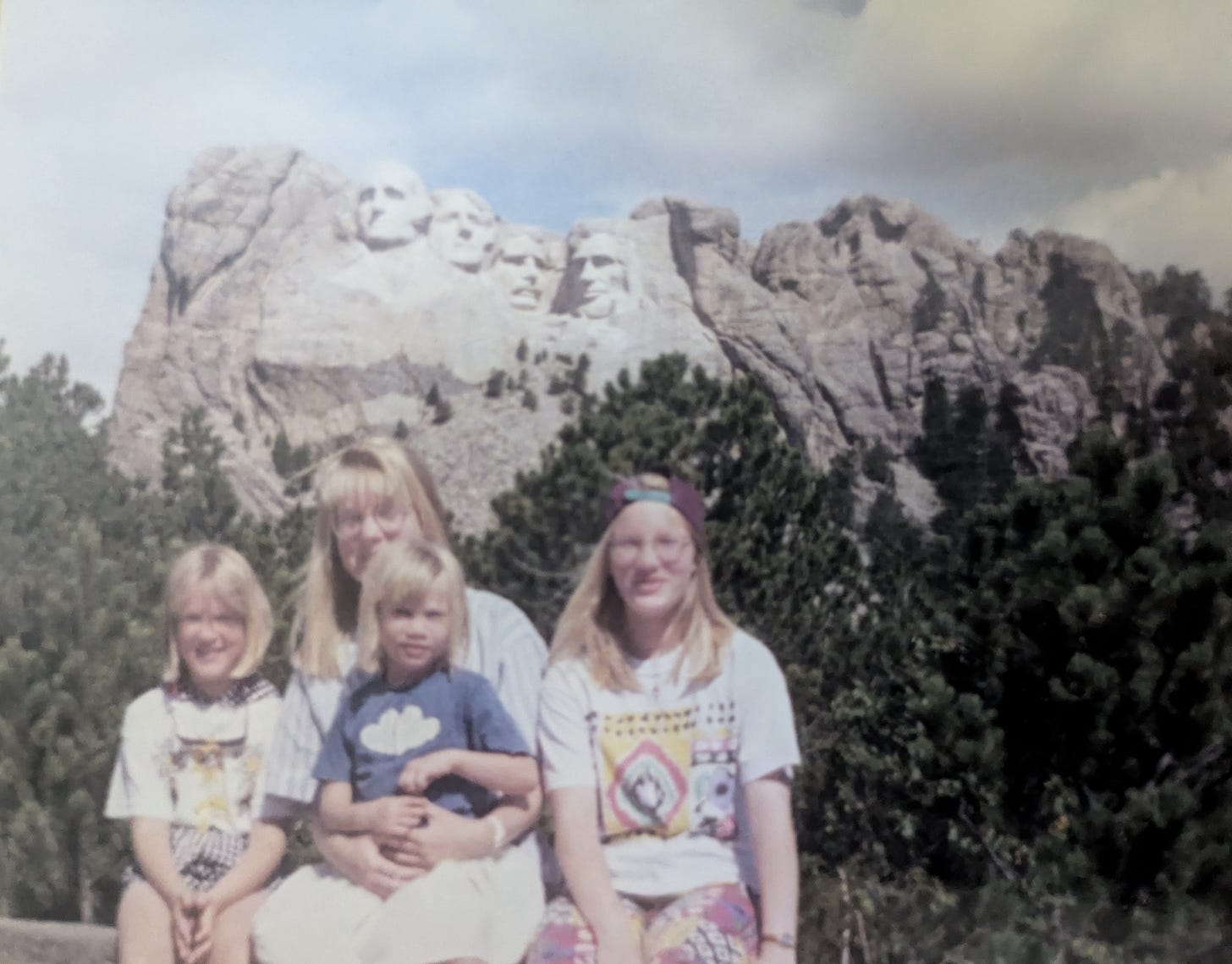
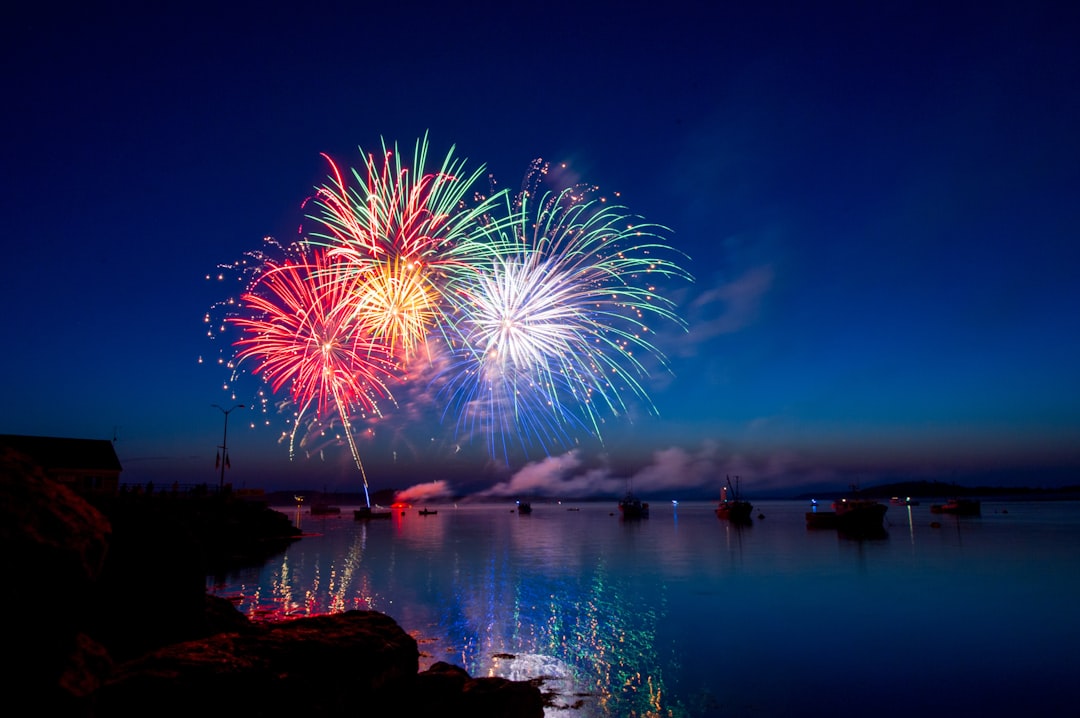



Love these discussions with your kiddos! Wise mama.